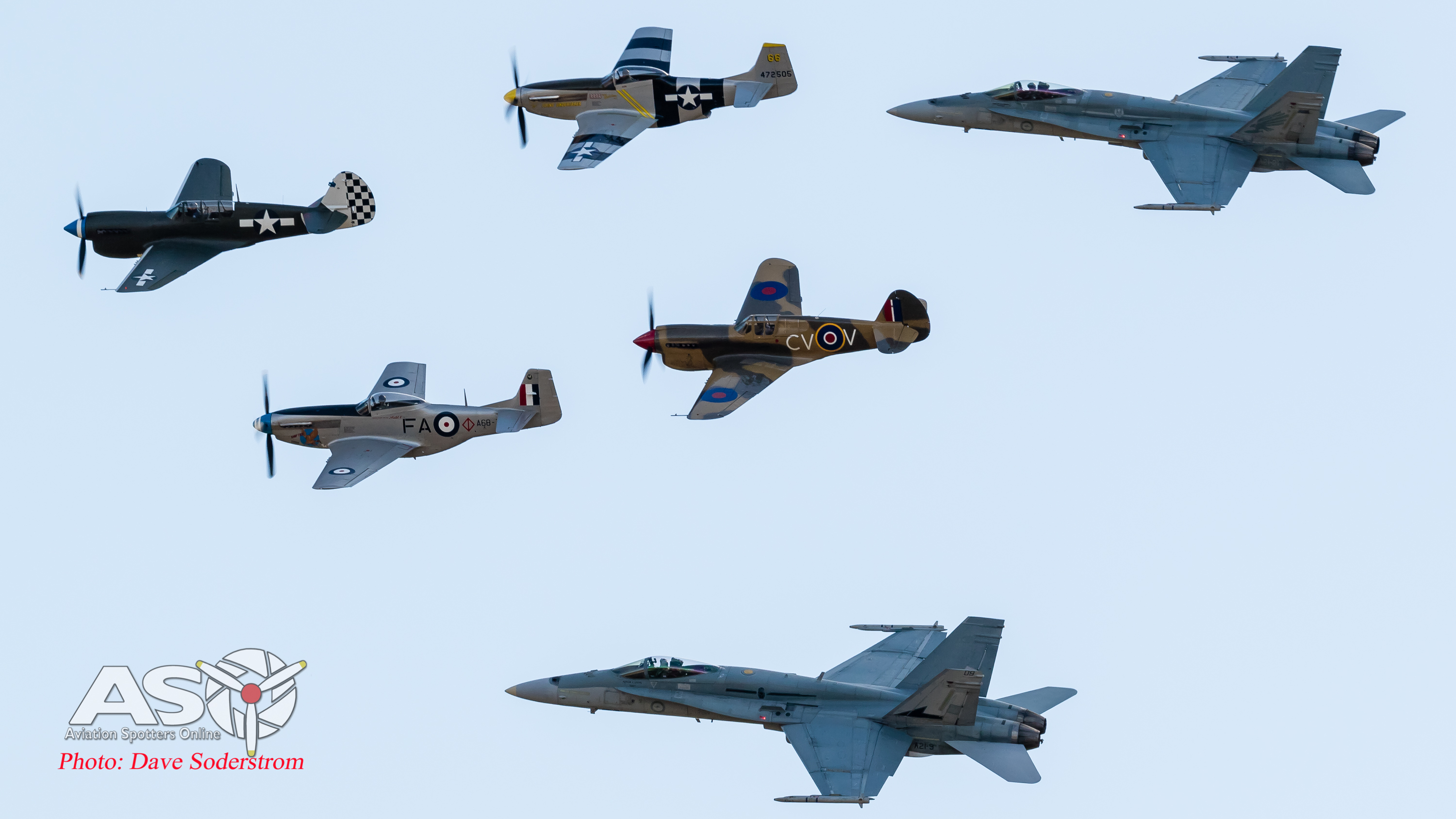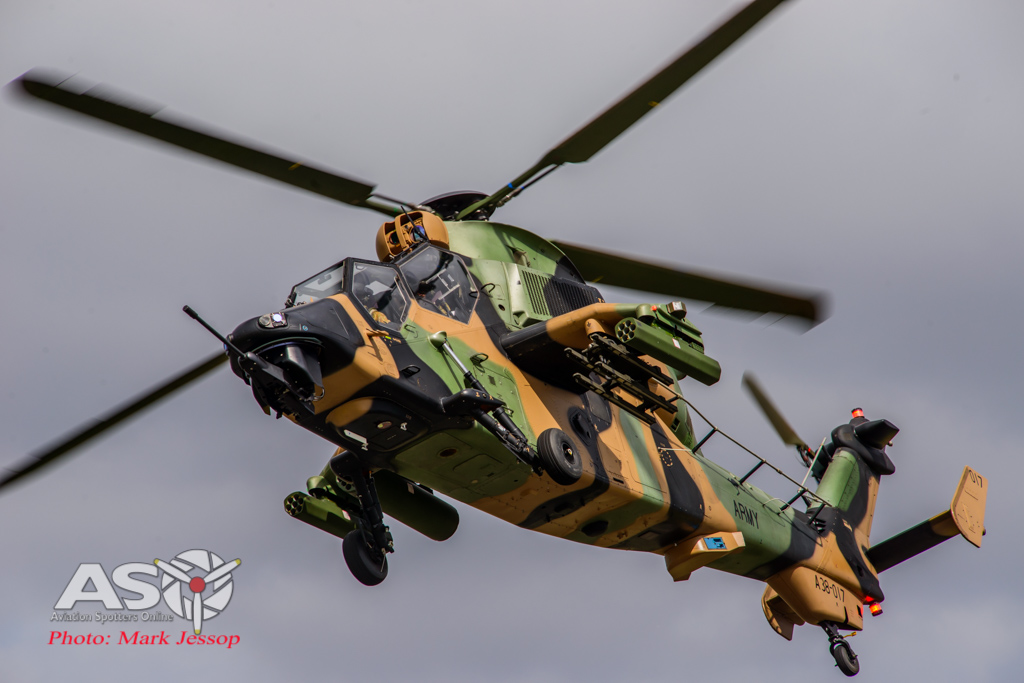For many visitors to the 2023 Australian International Airshow, the military might on display is one of the many reasons alone to attend. This year the United States Indo-Pacific Command turned the participation level up, with its largest display in as many years at the event.
The team that is Aviation Spotters Online, spent some time with members of the United States Air Force, plus U.S Army units during the event, learning about their aircraft, their roles and their missions as part of the broader US Forces.
On display this year was a real variety of types including:
- F-22A Raptors from Joint Base Elmendorf-Richardson, Alaska
- C-17A Globemaster III from Joint Base Pearl Harbor-Hickam, Hawaii
- B-52H Stratofortress from Barksdale, Louisiana
- F-15C Eagles from Kadena Air Base, Japan
- C-5M Super Galaxy from Dover Air Force Base, Delaware
- KC-135R Stratotanker from Sioux City, Iowa
- KC-46A Pegasus from McConnell Air Force Base, Kansas
- KC-10A Extender from Travis Air Force Base, California
- AH-64E Apache from Joint Base Lewis-McChord, Washington
- UH-60M Blackhawk from Joint Base Lewis-McChord, Washington.
The anticipation for the impending armada’s arrival was noticeable, as on the 25th of February, when even the weather gods were against the photographers and videographers, the first call was made over the radio announcing the first arrival.

The first aircraft to arrive that being a tanker, was also one of the services newest. The Boeing KC-46A. This near brand new aircraft 20-46075 was delivered to the service on the 21st of October 2022. Sadly its arrival and subsequent change of runway direction caught most spotters off guard, which meant a majority of images were of its initial turn for landing.

It was the impending arrival of the tip of the spear, Lockheed Martin F-22A Raptors that got a lot of the assembled people excited. And what an arrival it was! The three aircraft 07-4139, 06-4122 and 06-4127 performed several missed approaches, lighting the fires and retracting the undercarriage before landing before the next wave arrived.



The next pair to arrive like the Raptors have been to Avalon before. However, this visit would be a send-off. The last ride for the Japan-based F-15C Eagles from the 18th Wing. The last time the Eagles were at Avalon was back in 2009.
The pair of Eagles to descend for the last time were 83-0025 and 83-0029.


Accompanying them on the long flight was their tanker support, in the form of a McDonnell Douglas KC-10A Extender, from the 6th Air Refuelling Squadron (6 ARS) which is part of the 60th Air Mobility Wing at Travis Air Force Base, California, plus a Boeing KC-135R from the 185th Air Refueling Wing, Iowa Air National Guard. The KC-10A is no stranger to Avalon and Australia for that matter, 83-0078 visiting on several other occasions. The KC-135R 62-3549 with its bat on the vertical stabilizer was a welcome visitor.
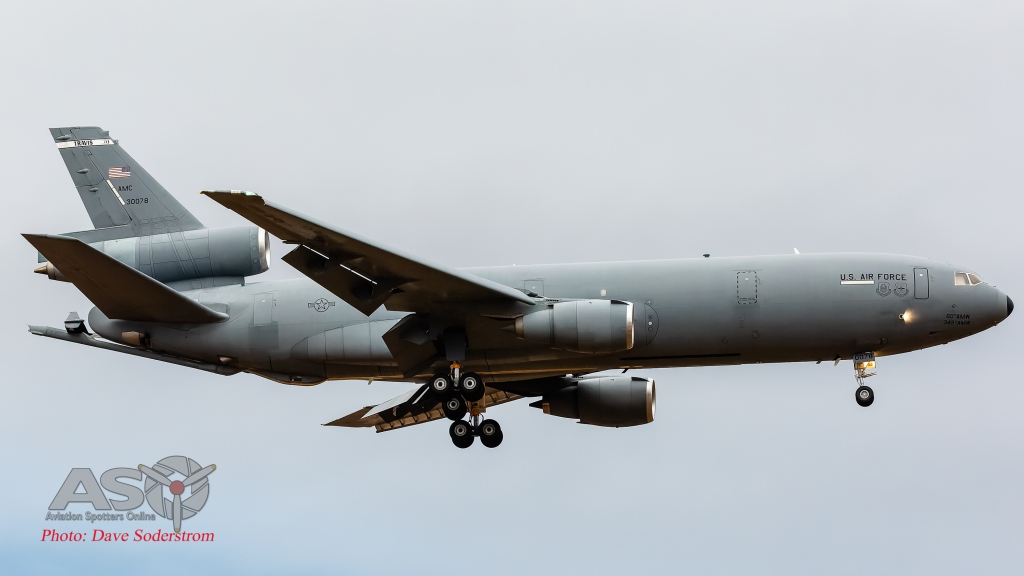
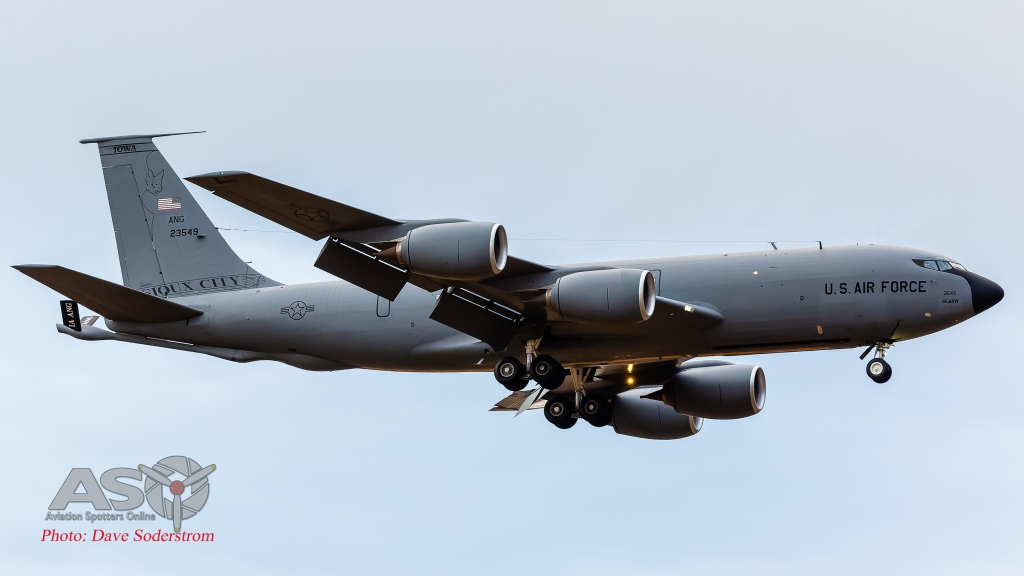
Later that night the two transports with support items and more crews arrived. This included the first C-5M Super Galaxy from Dover AFB, and C-17A Globemaster III from Hickham. Sadly these airframes arrived in the evening.
Rounding out the attendees were the AH-64E Apache and UH-60M transiting from RAAF Richmond. Both of these rotary assets had arrived earlier on the 24th of Feb. The Apache was working on the HMAS Canberra in Sydney the week before, taking the opportunity to conduct a series of deck-based training with the Royal Australian Navy which included landing and take-off, general deck handling, refuelling trials and Navy and Army future integration opportunities ahead of the types introduction to the Army in 2025.
The UH-60M which is also due to enter service with the Army to replace the troubled MRH-90 platform gave the Army a preview of their impending new type. The Army is no stranger to the Blackhawk having operated them from 1987 through to 2021. The newer version improves on the airframe’s strong and capable platform while also bringing interoperability to other platforms both current and in the future.
To say the US presence was impressive is very much an understatement. When the gates opened to industry on Tuesday the 28th of February, being able to visually witness three tankers, two heavy transports, five front-line fighters and a pair of frontline helicopters all in close proximity to each other, makes for some very impressive types to look at and understand.
So let’s get into the details on these respective displays both static and in the air, and dive into the squadron’s operations and the men and women who fly, maintain and operate these types.
The F-22A RAPTOR
The Lockheed Martin F-22A Raptor a firm favourite with people across the world was represented by the 477th Fighter Group, 525th Fighter Squadron ‘Bulldogs’. This unit is an Air Reserve squadron. They are currently assigned to the Tenth Air Force, Air Force Reserve Command, stationed at Joint Base Elmendorf–Richardson, Alaska. which is part of the 3rd Wing of Pacific Air Forces (PACAF). The three aircraft arrived from their current rotational deployment in Japan. The serials for each one are as follows, 07-4139, 06-4127 and 06-4122.
As the only operator of the F-22A, the USAF purchased 195 airframes which included eight test airframes followed by 187 operational aircraft. This has been reduced to 183 now with some damaged in training and other incidents.

The F-22A is flown by the following Wings and their respective squadrons.
- 1st Fighter Wing at Langley Air Force Base, Virginia
- 27th Fighter Squadron
- 94th Fighter Squadron
- 71st Fighter Squadron
- 3rd Wing at Joint Base Elmendorf–Richardson, Alaska
- 90th Fighter Squadron
- 525th Fighter Squadron
- 15th Wing at Hickam Air Force Base, Hawaii
- 19th Fighter Squadron (Pacific Air Forces associate unit)
- 154th Wing at Hickam Air Force Base, Hawaii
- 199th Fighter Squadron (Air National Guard unit)
- 192nd Fighter Wing at Joint Base Langley–Eustis, Virginia
- 149th Fighter Squadron (Air National Guard associate unit)
- 325th Fighter Wing – Tyndall AFB, Florida
- 44th Fighter Group – Tyndall AFB, Florida
- 301st Fighter Squadron (Air Force Reserve Command associate unit)
- 477th Fighter Group – Elmendorf AFB, Alaska
- 302d Fighter Squadron (Air Force Reserve Command associate unit)
Test and Evaluation Squadrons
- 57th Wing at Nellis Air Force Base, Nevada
- 422nd Test and Evaluation Squadron
- 433rd Weapons Squadron
- 412th Test Wing at Edwards Air Force Base, California
- 411th Flight Test Squadron
These individual squadrons field the 183 aircraft with many deploying across the world when and where a rotation or the need for force projection or defence is required. The USAF has begun a program called the Advanced Raptor Enhancement Sustainment (ARES) which will modernise the airframe for current and future needs. With plans to keep the Raptor in service until 2040 when the next 6th generation aircraft will replace it.

The Raptor making its own clouds

Showing its internal weapons bay, the F-22A can hold a trio of AMRAAMs in it.

The Raptor’s incredible performance generates what is termed ‘ecto’. Ecto (short for ectoplasm) is the white wispy compressed air that comes off the leading edges when there is a lot of moisture in the air.
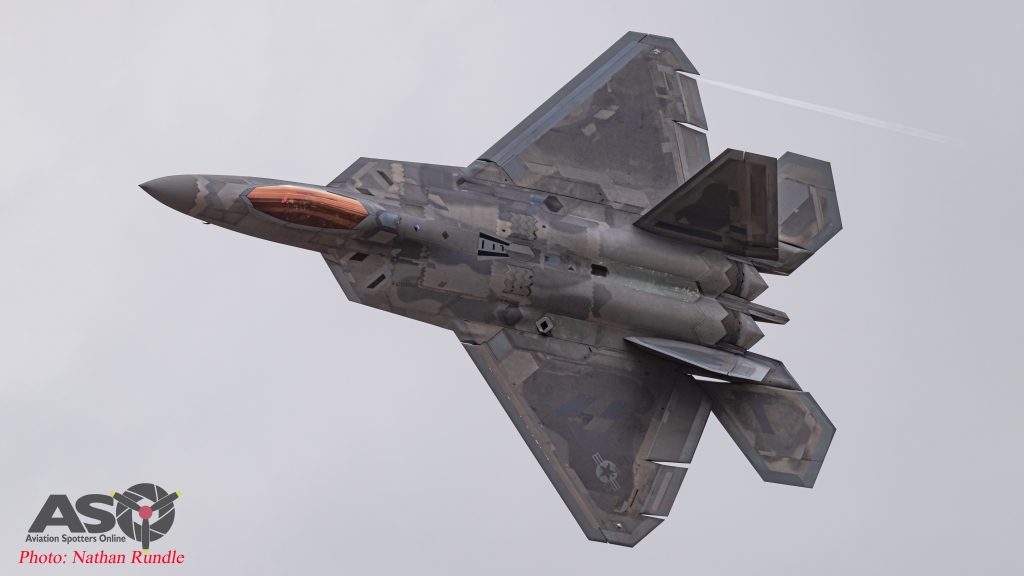

Etco starting to come from the aircraft as it pulls into the vertical.

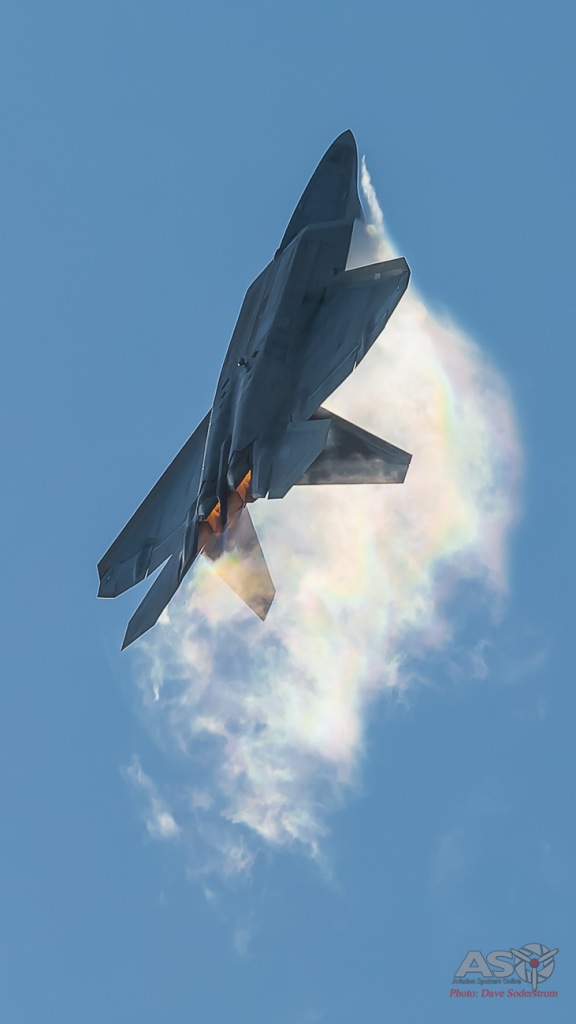
Full Ecto when the light and the compressed air from the aircraft, merge all sorts of magic happens.

The F-22A has four individual weapons bays.
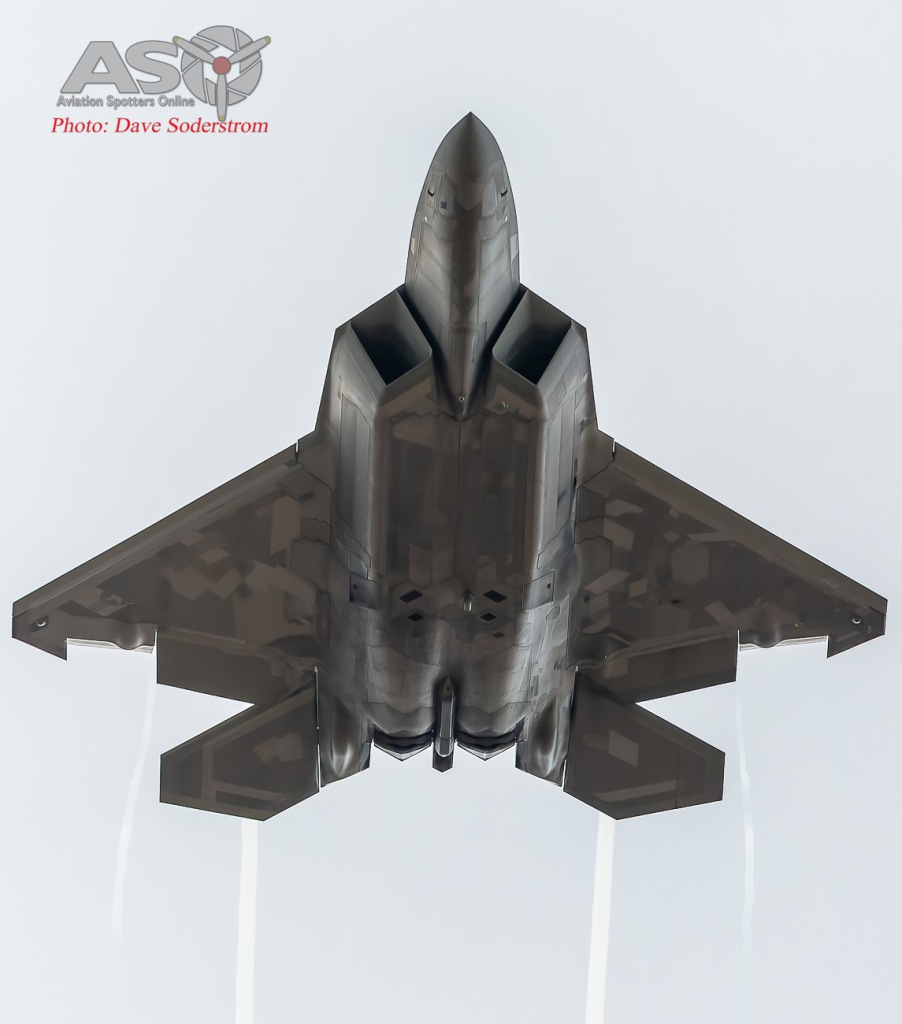

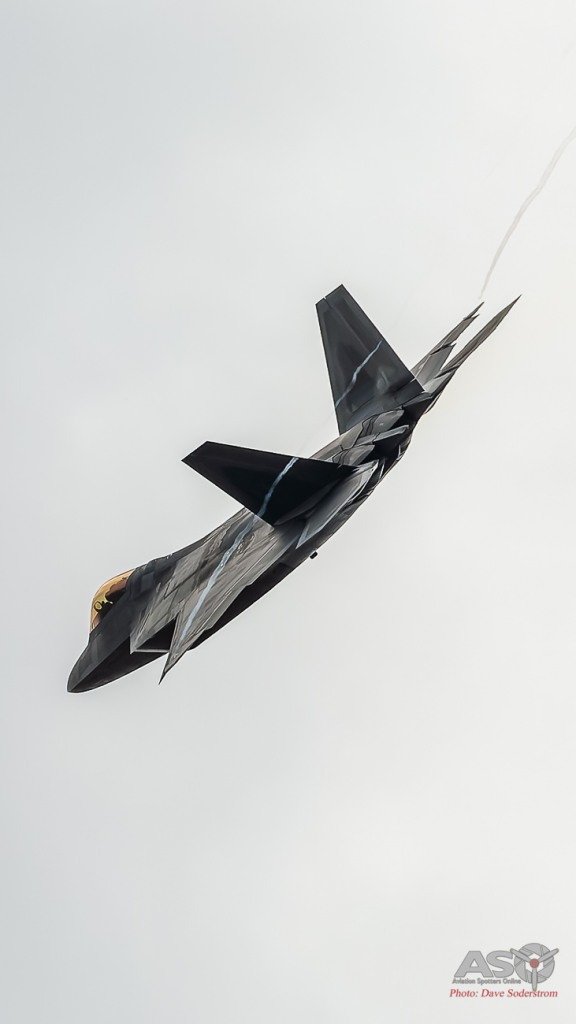



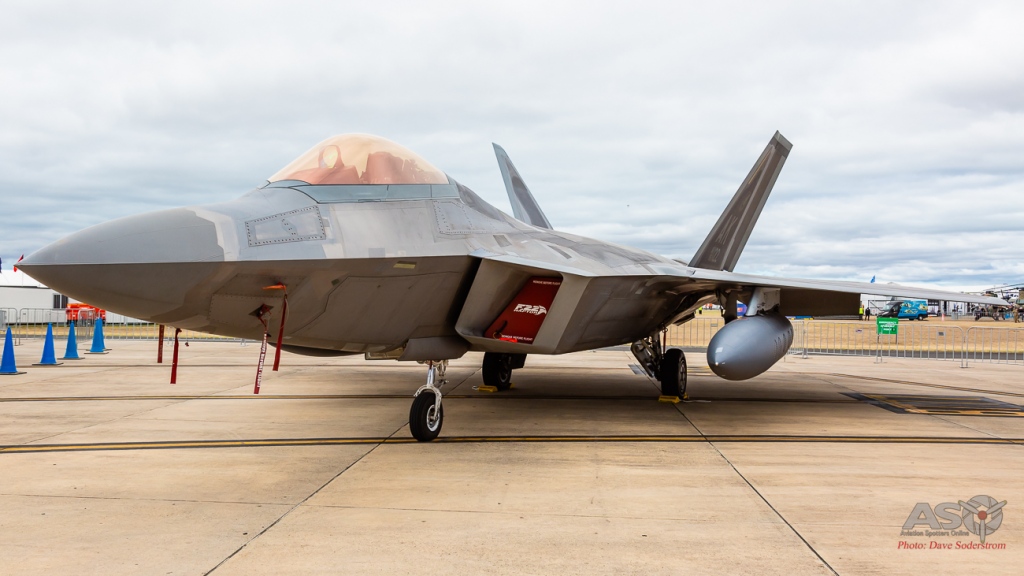
Eagles fly the nest
The F-15 Eagle has been the U.S. Air Force’s primary fighter jet aircraft and intercept aircraft since the late 1970s. The Eagle is known for its air superiority thanks in part to its exceptional maneuverability, phenomenal acceleration, range, weapons and avionics. The older versions of the Alpha and Bravo models were retired in 2009 leaving the Charlie, Delta and Echo models in service. What made the F-15’s arrival at Avalon all the more significant was the impending retirement of the Japan-based Eagles.
These aircraft were from the 67th Fighter Squadron “Fighting Cocks” which is part of the 18th Operations Group at Kadena Air Base, Japan. What was also unique is that these Eagles were the last combat-coded versions in USAF service. The Eagles have been flown by the 44th and 67th fighter squadrons for more than 43 years. The USAF announced the withdrawal of the Eagles from Kadena back to the US mainland which is to be completed by 2024. Some would be integrated into National Guard units while others would head straight to the Boneyard.

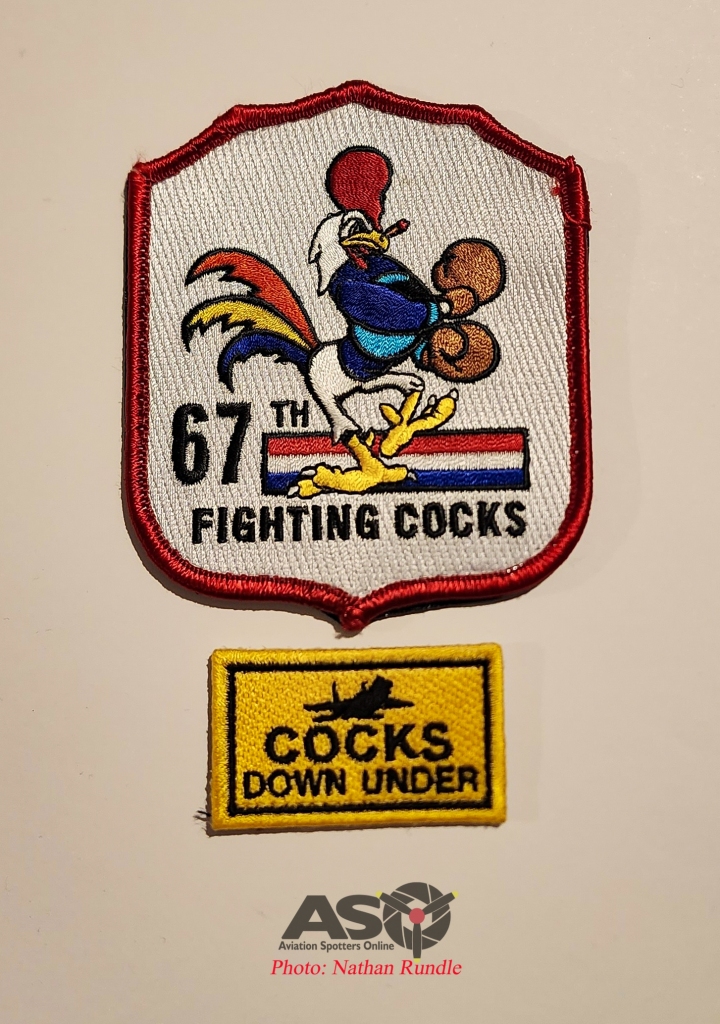
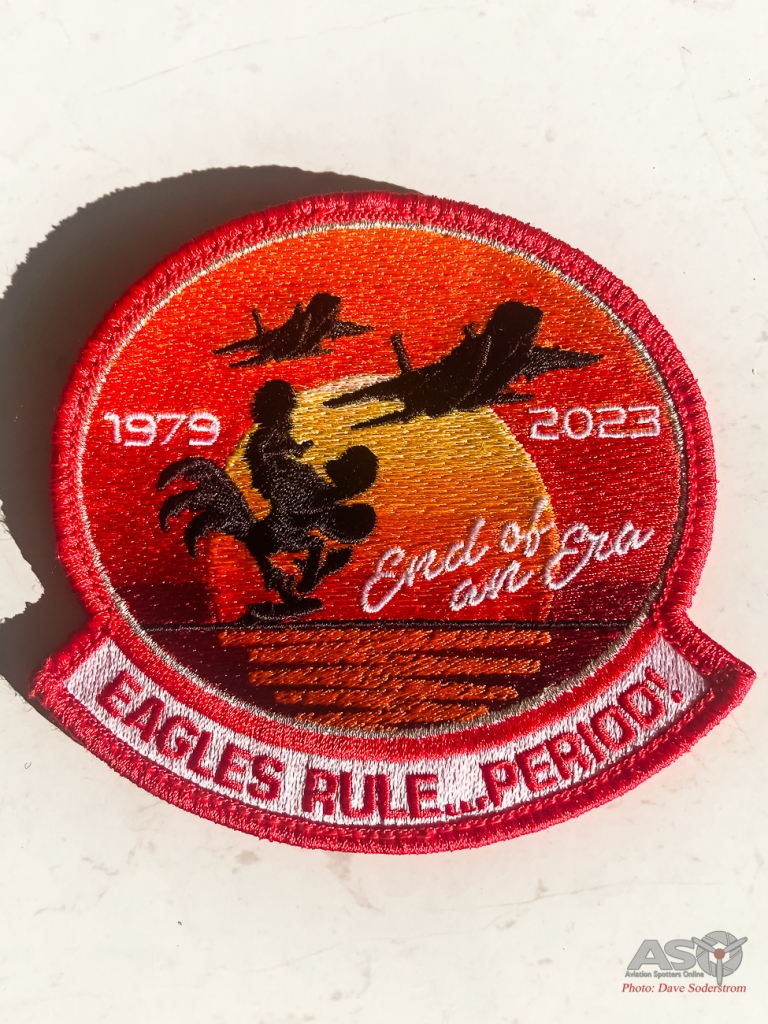
The patch worn by the F-15 drivers signifies the End of an Era, 1979-2023. And not a truer set of words written, Eagles DO rule…PERIOD.
So with the Eagle drawdown, its temporary replacement in the form of the 3rd Wing’s 525th Fighter Squadron F-22A Raptors which arrived at Kadena in late 2022. Arriving from Elmendorf-Richardson the twelve Raptors certainly aren’t as large in numbers that the Eagles once were.

The team was granted some time with First Lieutenant Trevor ‘Pitbull’ Markman who talks about his time in the Eagle and also a walk around the aircraft. Click the link below for the video.

The USAF has now funded 104 new build F-15EX Eagles. These new build Eagles will eventually make their way back to Japan. After speaking with the pilots and crews at the show, their love for the Eagle and their excitement for its continued deployment. The newer EX models won’t all be equipped with the Conformal Fuel Tanks (CFT) a distinct feature of the new model.
The USAF has taken delivery of its first EX models back in 2021, which are for early operational assessment.
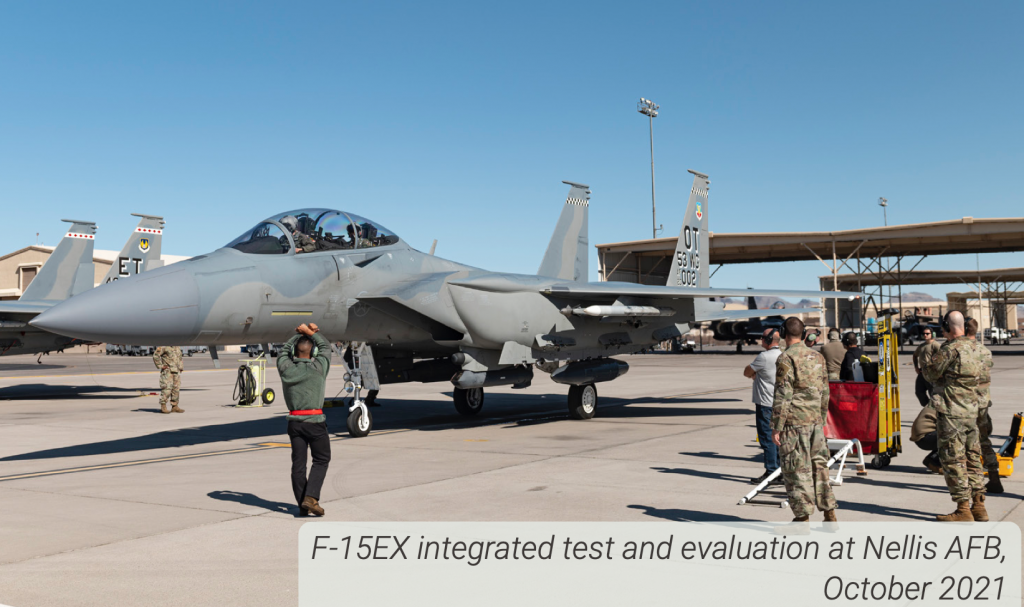
One of the F-15EX aircraft seen at Nellis Air Force base, operated by the 53rd Weapons Evaluation Group. (USAF image)

Will we see an Eagle again at Avalon………..time will tell.

Departing Avalon, the Eagle is still no slouch.

Super Galaxy debut
The Galaxy is no stranger to Avalon having been to the show on at least two previous occasions. Though this event was the first time the updated and re-engined C-5M Super Galaxy had attended. The Galaxy always looks so impressive on the ground owing to its large physical stance.
As part of a C-5 modernisation plan a comprehensive Reliability Enhancement and Re-engineering Program was initiated which saw the airframes undergo significant upgrades to remain in the USAF fleet well into the future. Some 52 C-5s underwent the program which consisted of C-5A/B/Cs which modified into C-5M Super Galaxies.

The older and less reliable and less efficient, four General Electric TF-39 engines were upgraded to General Electric CF6-80C2-L1F (F-138) engines. These engines deliver a 22 percent increase in thrust, a 30 percent shorter take-off roll, a 58 percent faster climb rate and improving the availability of the type and reducing maintenance costs over the life of the engines.
During the event, the aircraft was certainly extremely popular as it was full most of the time with curious on-lookers.
The ASO team was able to spend some time with some of the crew members during Avalon, see the link here for an insight into this remarkable aircraft.

The 709th Airlift Squadron is part of the 512th Airlift Wing at Dover Air Force Base, Delaware. Activated as a Military Airlift Command reserve associate C-5 Galaxy squadron.
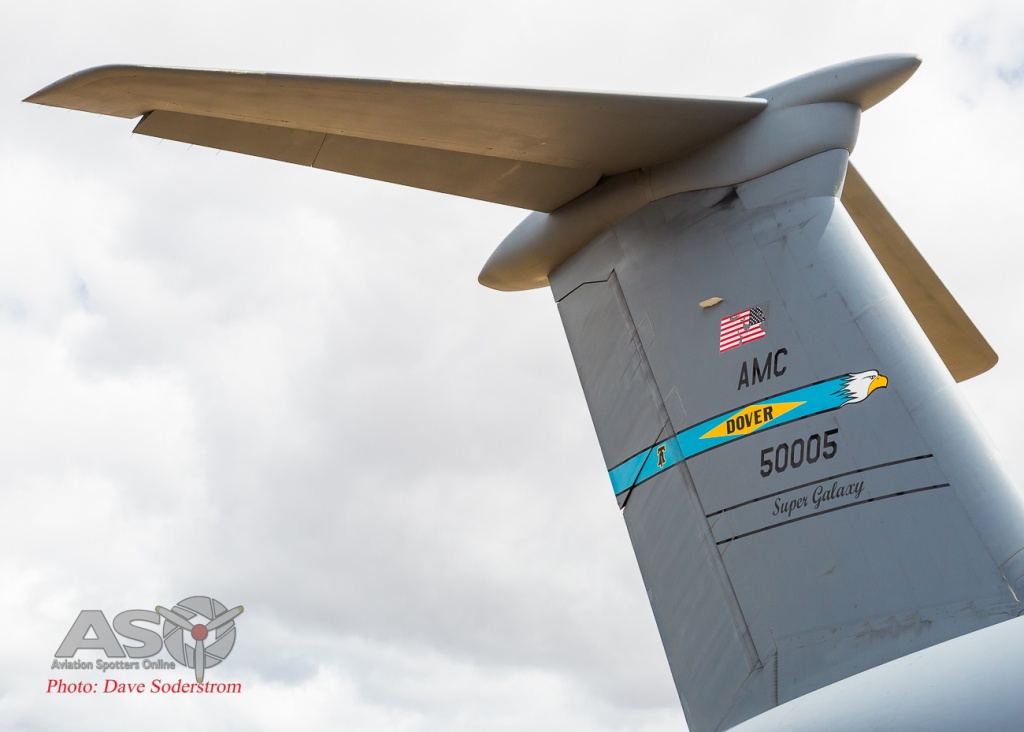




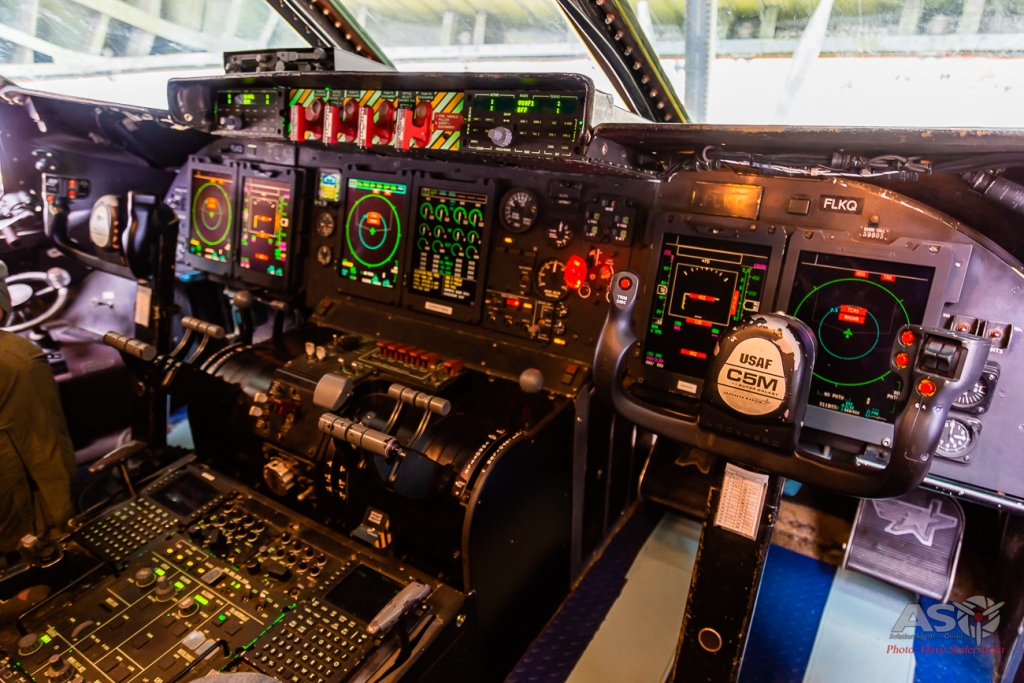
C-5M Super Galaxy cockpit.

Crew compartment behind the cockpit.



Hawaiian Globemaster Demo
Another return visitor from the United States Boeing C-17 Globemaster III from Joint Base Pearl Harbor-Hickam in Hawaii.
Part of the 15th Wing, which reports to the 11th Air Force, Headquartered at Joint Base Elmendorf-Richardson, Alaska. This particular aircraft was part of the 154th Wing (154 WG) a unit of the Hawaii Air National Guard and is flown by the 204th Airlift Squadron. Established in 1994, the squadron provides airlift capability and to support joint exercises in Hawaii with Army and Marine Corps units. Originally the squadron operated the Lockheed C-130 Hercules which was replaced by the C-17A in 2008.


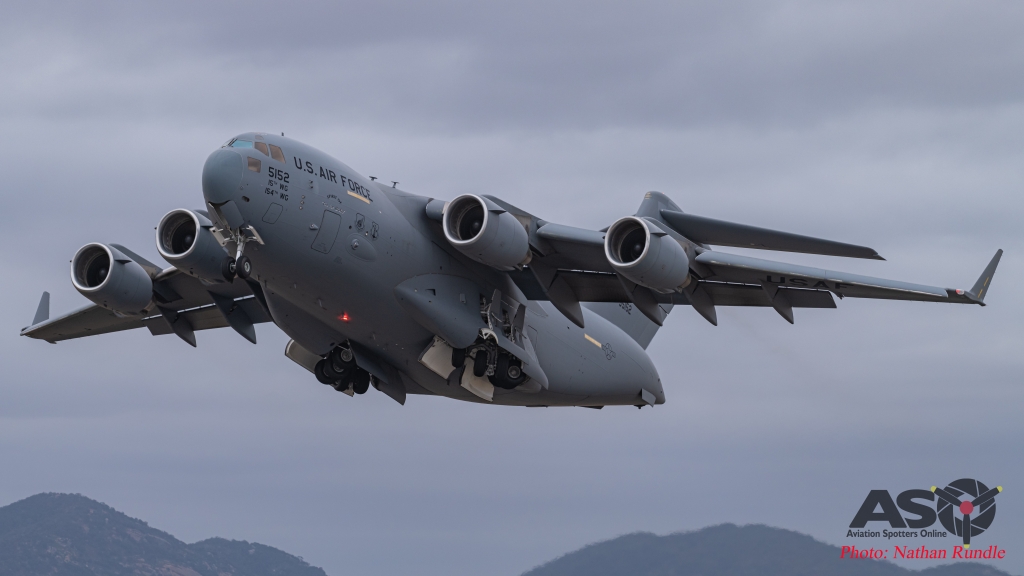
Powered by four Pratt & Whitney F117-PW-100 turbofan engines, which are based on the commercial Pratt & Whitney PW2040 used on the Boeing 757. Each engine is rated at 40,400 lbf (180 kN) of thrust. This trust gives the C-17 exceptional performance for a large transport aircraft.

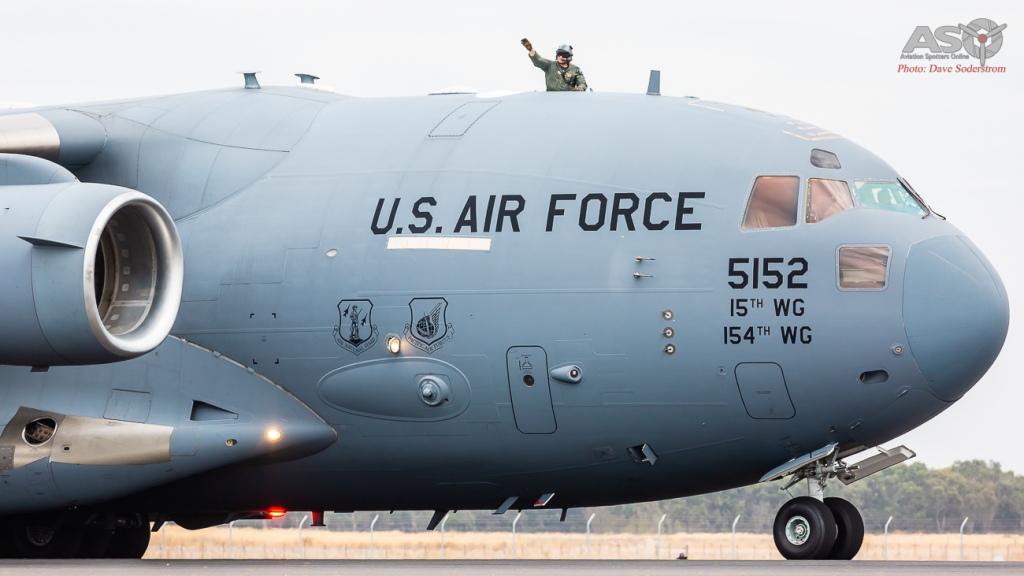
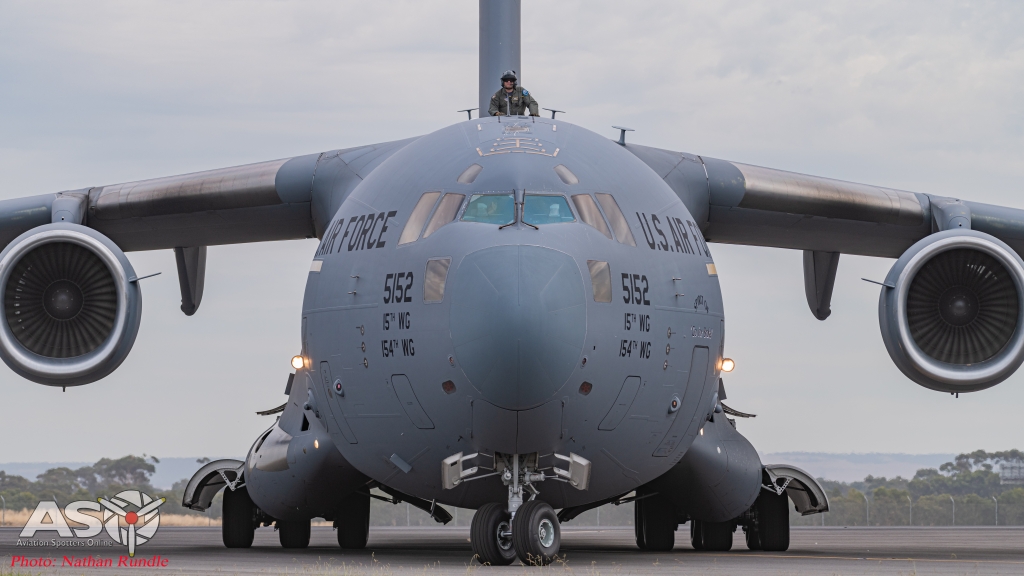


The Buff returns
A huge crowd favourite is the timeless and awe-inspiring Boeing B-52H Straofortress. The USAF currently has an active fleet of 58 including four test airframes, with a further eighteen in the Reserve squadrons. The B-52A first flew in 1954, a total of 744 B-52s were built, with the last, a B-52H, delivered in October 1962. The aircraft is soon to undergo its largest upgrade in many years. The Air Force selected the F130 engine made by Rolls-Royce for the B-52 Commercial Engine Replacement Program, or CERP. Under the $2.6 billion contract, Rolls Royce will be replacing the bomber’s aging Pratt & Whitney-made engines.
This aircraft is currently flown by the following wings:
- 2nd Bomb Wing – Barksdale AFB, Louisiana
- 11th Bomb Squadron (B-52H, Tail Code: LA, Gold Tail Stripe)
- 20th Bomb Squadron (B-52H, Tail Code: LA, Blue Tail Stripe)
- 96th Bomb Squadron (B-52H, Tail Code: LA, Red Tail Stripe)
- 5th Bomb Wing – Minot AFB, North Dakota
- 23nd Bomb Squadron (B-52H, Tail Code: MT, Red Tail Stripe)
- 69th Bomb Squadron (B-52H, Tail Code: MT, Yellow Tail Stripe)
- 307th Bomb Wing (AFRC) – Barksdale AFB, Louisiana
- 93rd Bomb Squadron (B-52H, Tail Code: BD, Blue/Gold Chex Tail Stripe)
- 343rd Bomb Squadron
- 412th Test Wing (AFMC) – Edwards AFB, California
- 419th Flight Test Squadron (B-52H, Tail Code: ED)
Arriving in Avalon skies from Darwin on Saturday afternoon was aircraft 60-0025 named Old Crow II. This aircraft is from the USAF’s 20th Bomb Squadron. Two aircraft arrived in Darwin prior to the event. Making two passes along the front of the crowd the BUFF (Big Ugly Fat F**ker) seems to bring a sobering hush over the crowd as you watch it glide across in front of you. With the type to remain in service past 2040, it will be the only aircraft type to be over 100 years old when and if it is retired. A magnificent achievement for the USAF and Boeing.
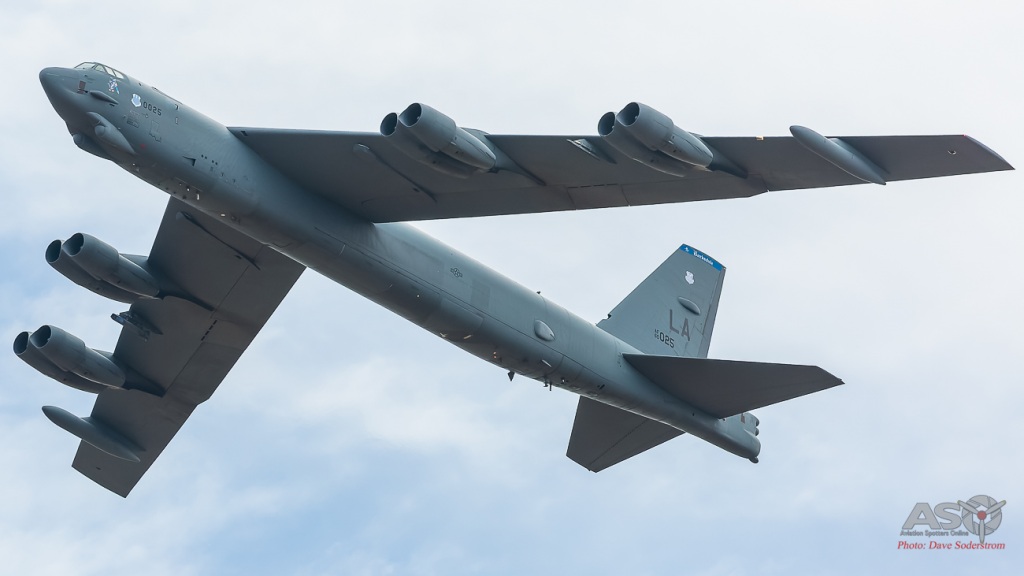

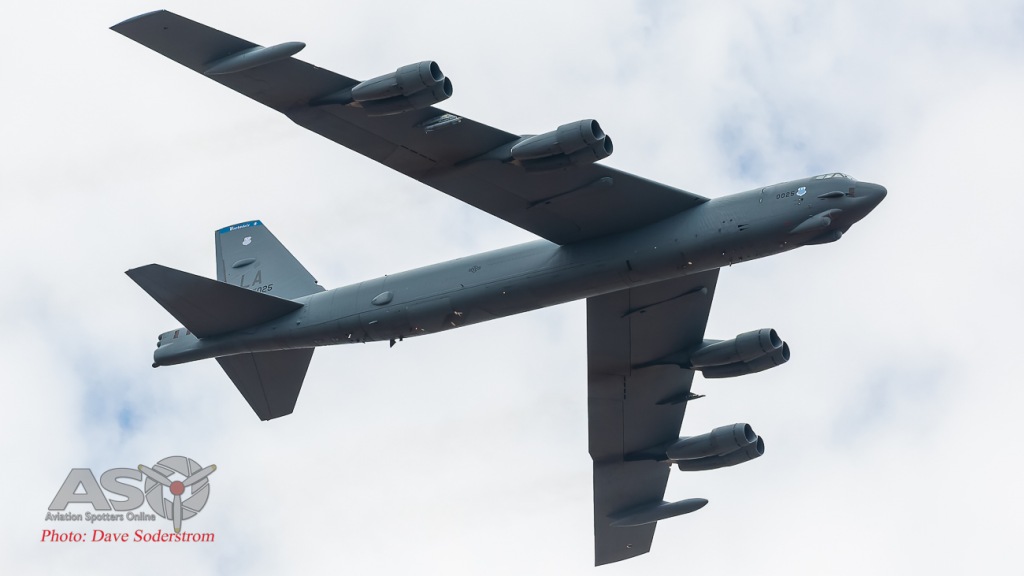
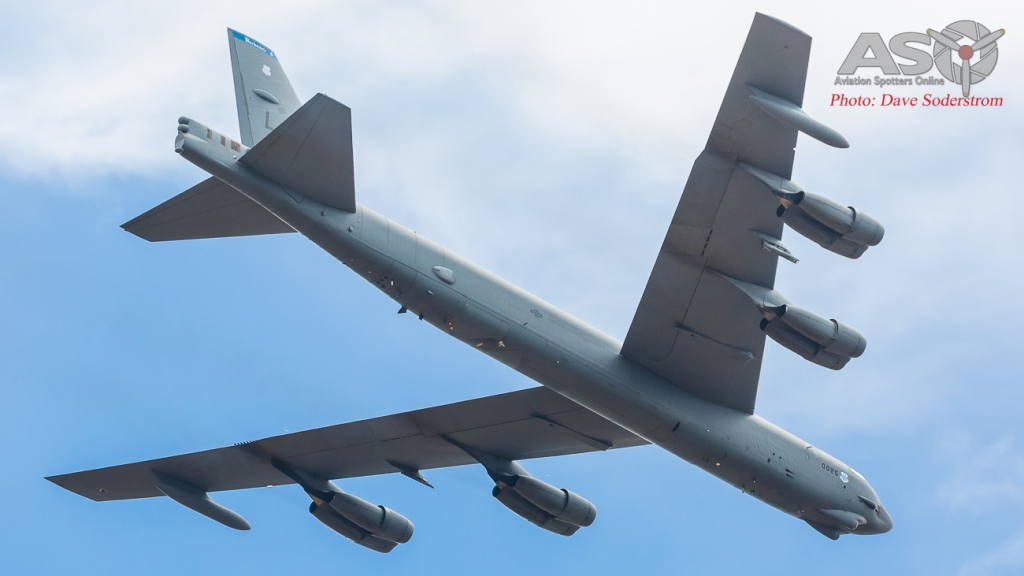
Army Helicopters showcase the way for Australia
Two future types were brought for display by the American Army to showcase the future of Australian Army Aviation units in the coming years. A Boeing AH-64E Apache and Sikorsky UH-60M Blackhawk were on display from their home base at Joint Base Lewis-McChord, Washington.
The Australian Army will be fielding a fleet of 29 Apaches, and 49 Blackhawks in the coming years replacing the troubled ARH Tiger and MRH-90 Taipans.
Boeing announced that it will hire Australian companies to supply parts for its AH-64E Apache. Suppliers will provide components for new Apaches including Australia’s examples. The Apache recently conducted trials aboard the Navy’s LHD ships to allow for future operations from these ships.
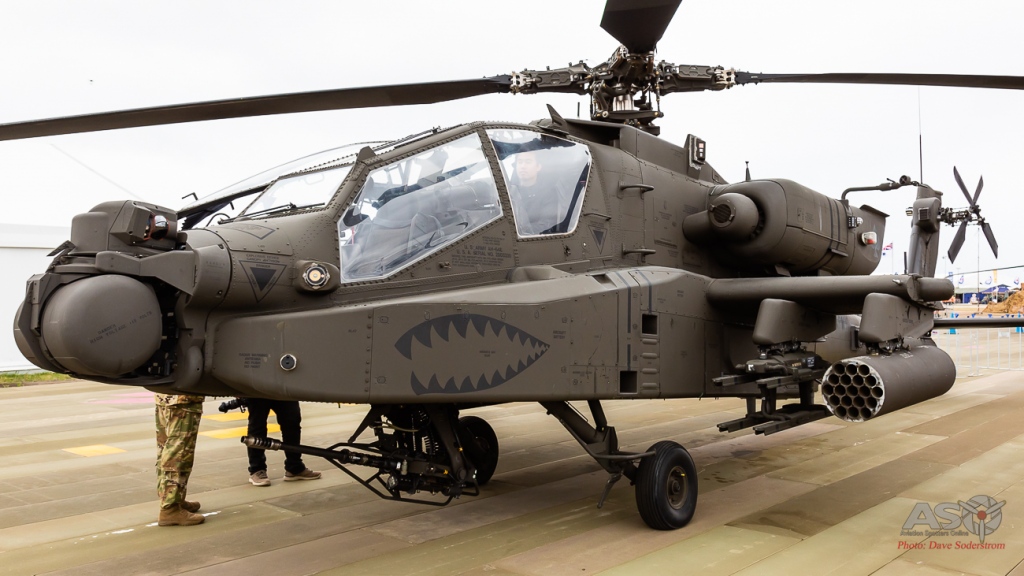

Australian companies Cablex and Thomas Global Systems respectively will manufacture cabling, and design and manufacture cockpit avionics components for the global fleet of Apaches.
For the Australian fleet of Apaches, four companies – Cablex, Ferra, Axiom Precision Manufacturing and Mincham – were selected to supply wire harnesses, electrical panels, vertical spar box, machined parts, fairings and composites.
“By partnering with the Australian government and investing in local businesses including small-and-medium enterprises, this agreement will help create jobs, develop Australia’s aerospace and manufacturing capability, and grow the local economy,” said Kathleen Jolivette, vice president and general manager of Boeing Vertical Lift.
The supplier contracts are part of an agreement signed by Boeing and Defence Australia at the Avalon 2023 Australian International Airshow. The agreement also acknowledges the benefit of the Australian Global Supply Chain (GSC) Program that delivers export opportunities into Boeing’s supply chain.
“Defence has worked diligently with US Army, Boeing and local industry to ensure we are providing the best capability for the Australian Defence Force,” said Major General Jeremy King, Head of Defence’s Joint Aviation Systems Division.
“We look forward to continuing to work together through this agreement signed today to seek further opportunities for local industry involvement in both the production of Australia’s Apaches and the broader global fleet product and support activities.”
Sikorsky also announced its local contributions at the event.
It also celebrated its 100th anniversary as a company at the show. Sikorsky President Paul Lemmo was noted as saying “2023 is a momentous year for Sikorsky as we celebrate our 100th anniversary,” said Sikorsky President Paul Lemmo. “All of our capabilities are the result of an incredible culture of innovation that started with our founder Igor Sikorsky. Innovation is central to our mission of supporting our customer’s most difficult challenges, and it continues to flourish thanks in large part to the deep ties we share with Australia.” He further went on to expand on the display of the UH-60M at the event.
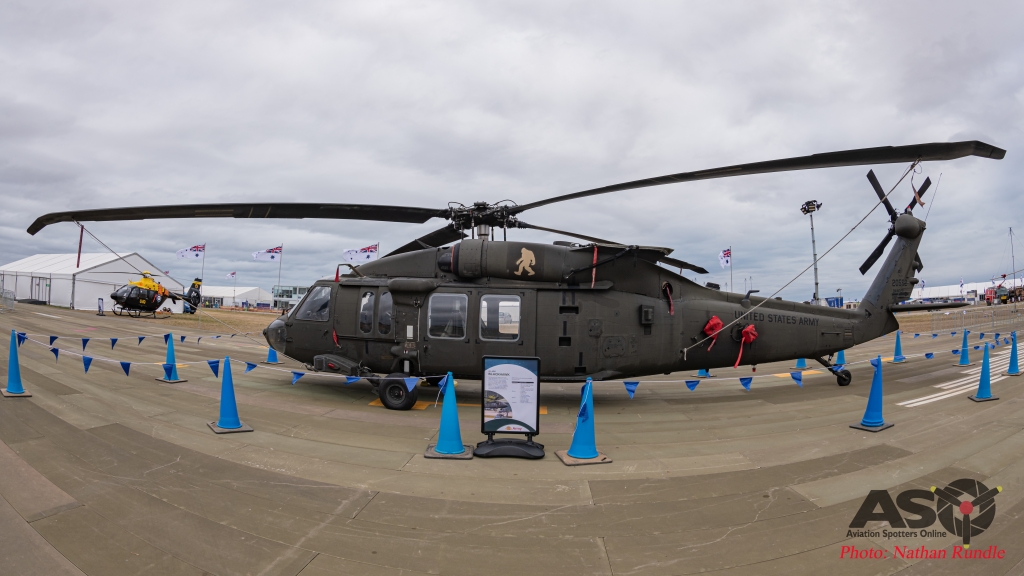

“The multi-mission UH-60M Black Hawk provides the Australian Army with critical capabilities that will strengthen Australia’s readiness, interoperability and security for decades to come,” Lemmo said. “We continue to invest in Black Hawk modernization to provide operators with the competitive edge they require to counter and deter threats today and in future Joint All-Domain Operations.”
Tanker Tails
KC-135R Stratotanker
A type that not only continues to defy the odds thanks to its age, but, it remains the USAF’s main tanker for combat operations. The USAF maintains 396 Stratotankers, of which the Air Force Reserve and Air National Guard fly 243 aircraft in support of AMC’s mission. Currently, they are operated in both KC-135R and KC-135T versions.
This year’s event saw an aircraft visit from the 185th Air Refueling Wing, Iowa Air National Guard. Complete with a large bat on the tail.

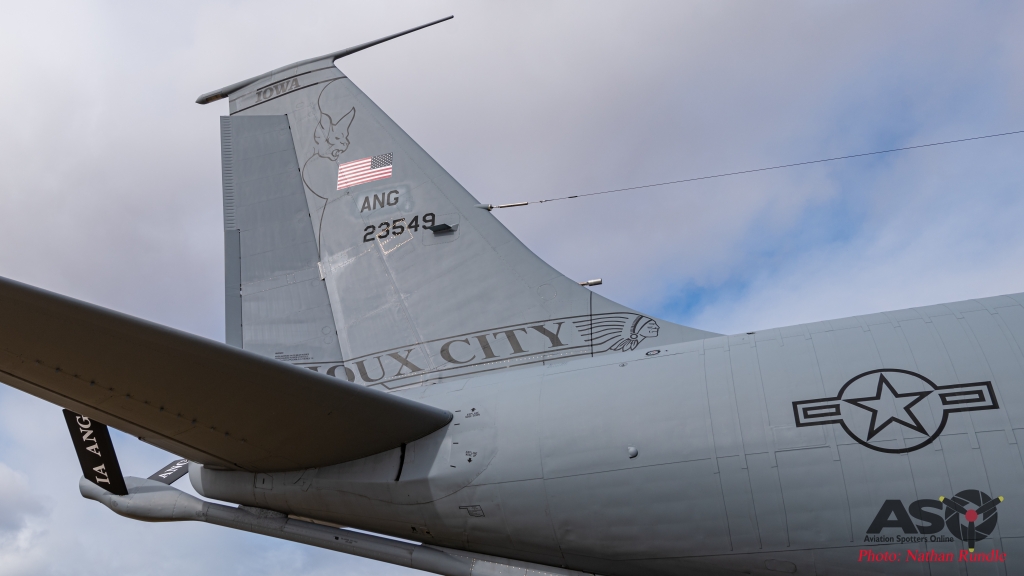


A unique opportunity at the airshow came when we were able spend some time with the
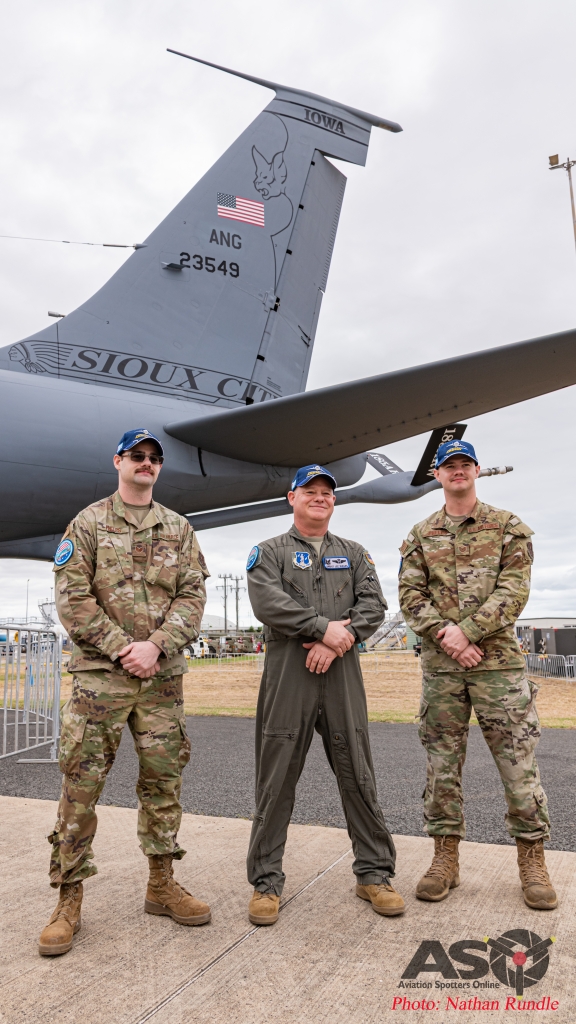
The father and sons team who crewed the KC-135 to Australia.


The wing was made active on the 1st October 1962 as the 185th Tactical Fighter Group as a single headquarters for the 174th Tactical Fighter Squadron flying North American F-100 Super Sabre then transitioning to the Vought A-7 Corsair II and General Dynamics F-16 Flighting Falcon. 2003 saw the 185th become the 185th Air Refueling Wing flying the Boeing KC-135E tanker before moving to the current KC-135R version. In early January the unit celebrated its 20th year in the Air Refueling business.
The unit continues to support tanking requirements for the NATO mission in Geilenkirchen and also refuelling requirements at Anderson Air Force Base in Guam in support of the continuous bomber presence in the Pacific.
Avalon gave visitors the unique position of seeing all three types of large tankers in the USAF inventory from the KC-135 through to the KC-46. Spanning from 1957 through to today three generations of large air-to-air refuelling aircraft are something very few airshows can claim to have in one place.
KC-10A Extender one last ride.
As noted in our previous article here http://aviationspottersonline.com/usaf-6th-ars-take-extender-83-0078-to-farewell-oz/ The USAF brought along the KC-10A Extender to the event. What made this all the more significant was that this aircraft had a significant number of visits to Australia over the years and will now head back to the United States and retire in the boneyard.


The Extender was parked next to its replacement the Boeing KC-46A Pegasus.
New tanker new tricks
A first-time visitor to the event was the KC-46A tanker based on the commercial Boeing 767-200ER airliner. The USAF selected it as the winner in the KC-X tanker competition to replace older Boeing KC-135 Stratotankers. The first example was handed over in January 2019. With 179 examples to be in service by 2027. It is fitted with an improved version of the KC-10 refuelling boom, and cockpit displays from the 787.

The KC-46A is being pitched at airforces in the Asia Pacific region. Boeing has already secured orders from the Japan Air Self-Defense Force (JASDF) (x 6) and the Israeli Air Force (IAF) (x 4). The USAF now has 68 examples in service. The Italian Air Force is the next likely customer which already operates the KC-767.
Boeing has designed the aircraft to have a lower fuel consumption, which means there is now more fuel available for its receiving aircraft. The KC-46A boom provides a receiver envelope three times larger than the outgoing KC-135. The manufacturer has also cleared the Pegasus for receiver certifications which include the: AV-8B, B-1, B-2, B-52, C-5, C-17, C-130, C-135, CV-22, E-3, E-8, EA-18, F-15, F-16, F/A-18, F-22, F-35, KC-10, KC-46, KC-135, P-8A and V-22.
Wing Air Refueling Pods (WARPS) are another feature of the KC-46A. In addition to the boom on the centreline the two wing-mounted WARPS.
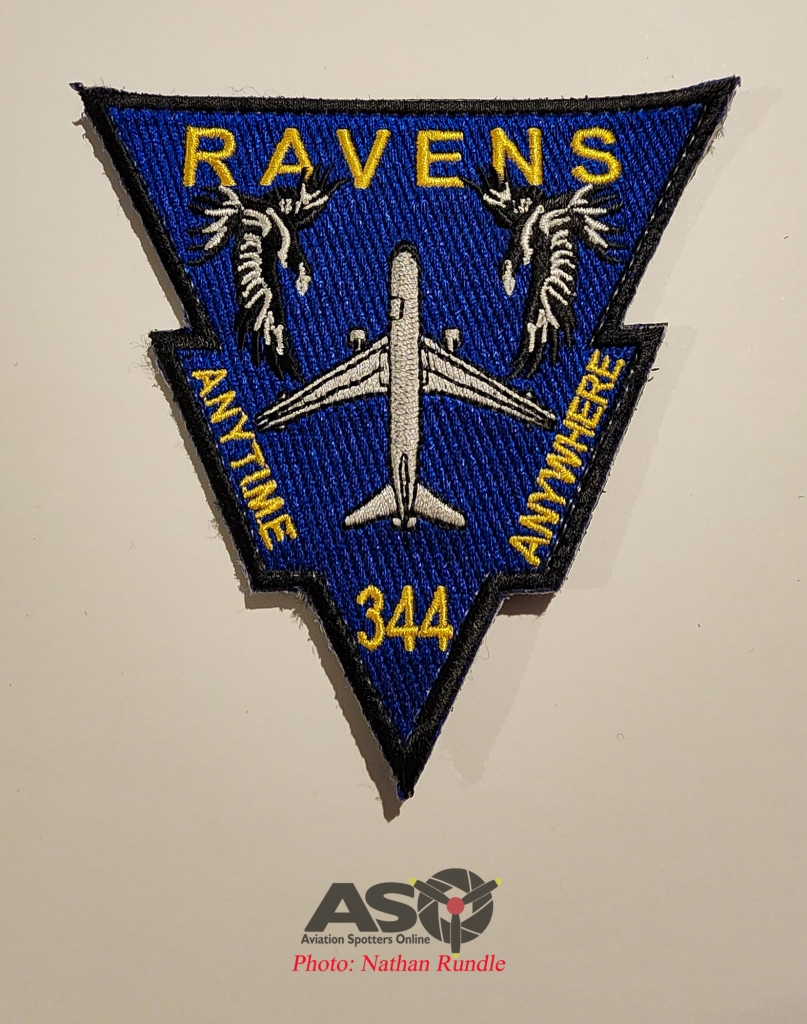


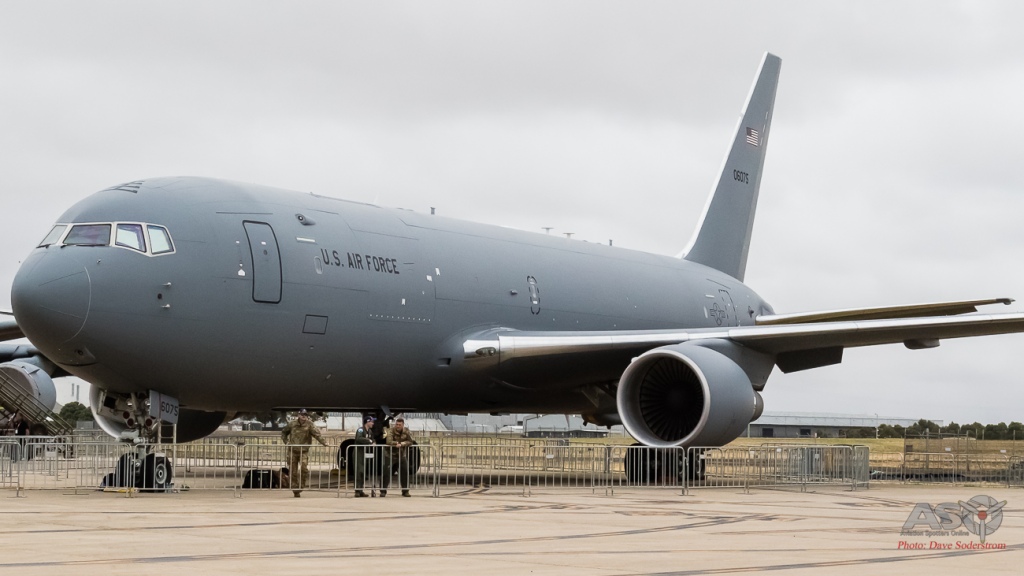
This particular KC-46A 20-46075 was delivered to the service on 21/10/22.
Conclusion
As can be seen from above the United States contributed a significant amount of displays both static and in the skies of Avalon Airport. The strong ties to the USA can only strengthen a bond formed between Australia and the former which has been tested time and time again.
At the end of the show, all aircraft would leave the airfield and depart back to their respective operating bases. Nathan Mark and Myself (Dave) wish to thank the USAF and the crews who made this article and the videos possible. We appreciate their service to their country and for making us feel so welcome.

Content editor and Nikon Photographer Nathan Rundle

Content writer and Canon Photographer Dave Soderstrom (RH) and Content and Canon Videographer Mark Pourzenic.


